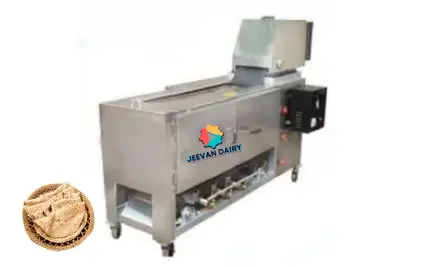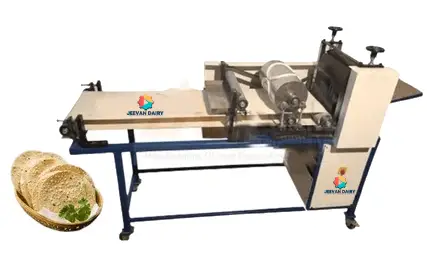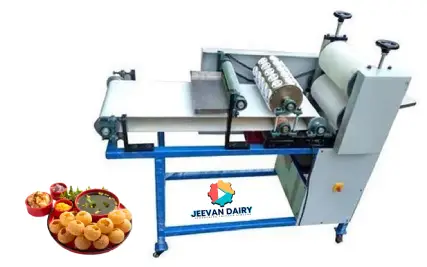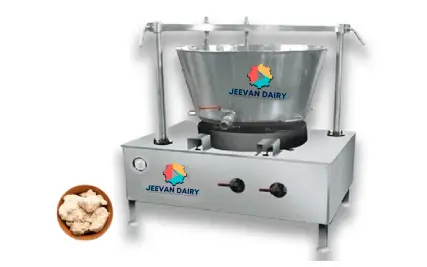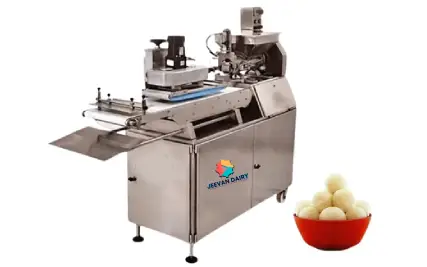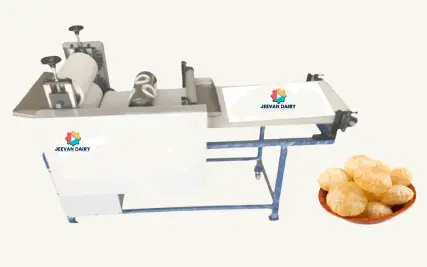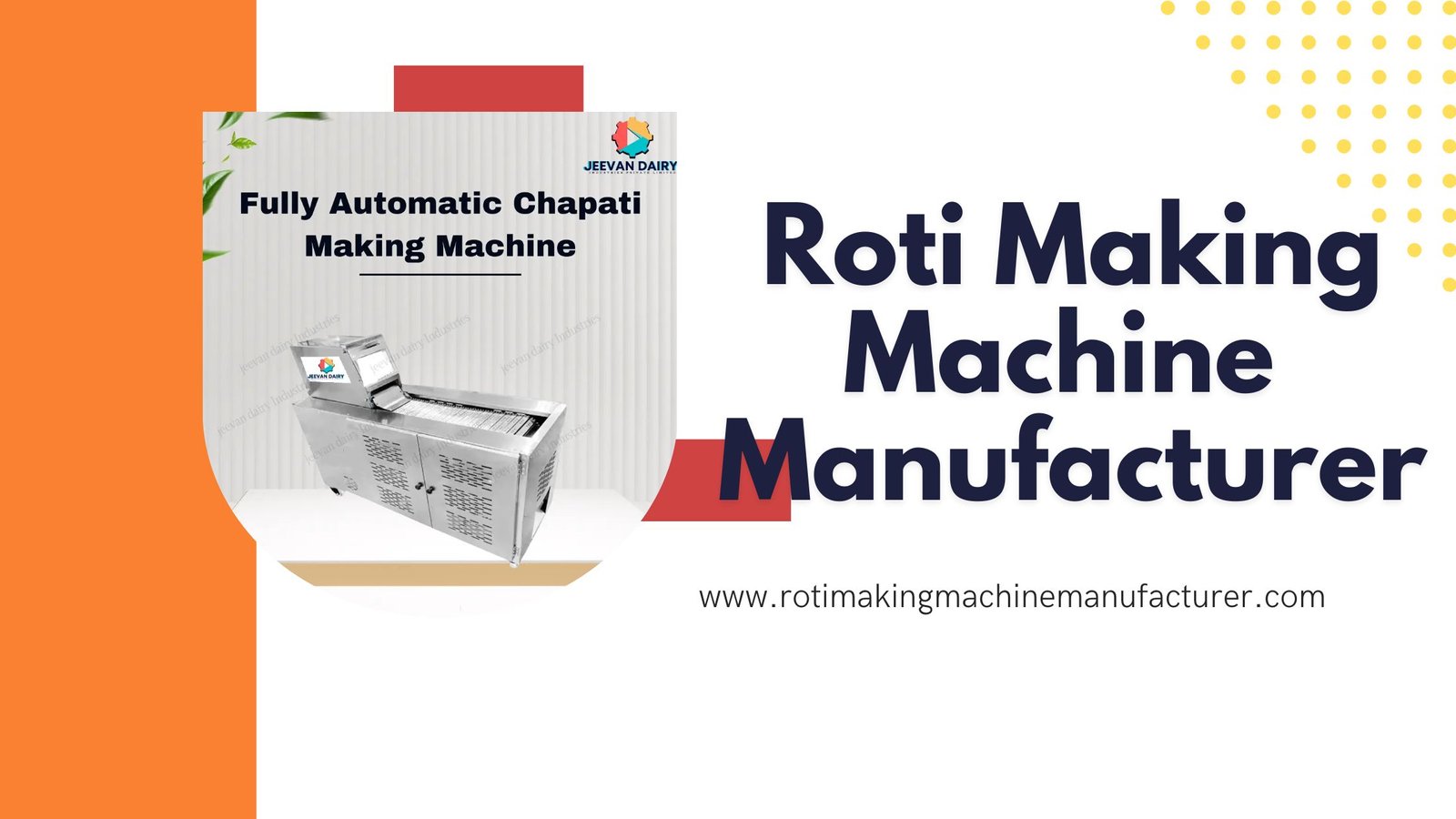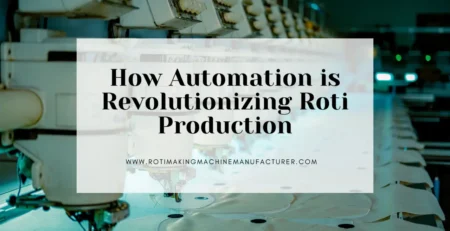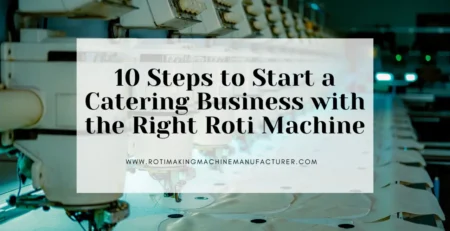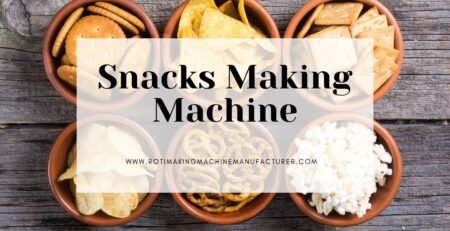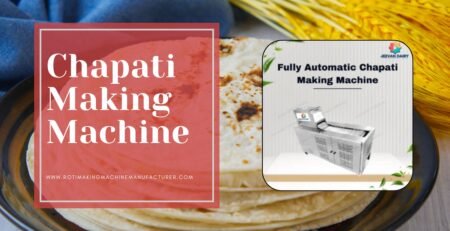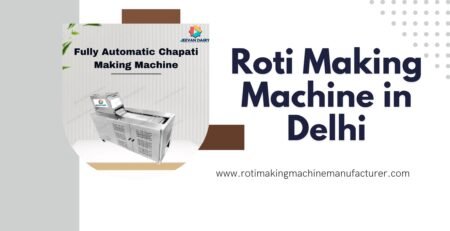5 Common Myths About Roti Making Machines—Busted!
Roti—a staple in countless Indian households and restaurants—is often considered a symbol of tradition, warmth, and handmade excellence. So when the idea of using a roti-making machine comes up, many people hesitate. Will it compromise taste? Is it worth the investment? Isn’t it just for massive food factories?
At Jeevan Diary Industry, we’ve heard all these concerns—and we’re here to tell you: most of them are myths.
In this blog, we’ll bust the top 5 myths about roti-making machines and show you why modern kitchens—big and small—are making the switch.
Myth 1: Machine-Made Rotis Don’t Taste as Good as Handmade Ones
Busted!
This is the most common myth—and the most incorrect.
Modern roti making machines are engineered to replicate the same kneading, pressing, and roasting techniques used by skilled cooks. With temperature control, even pressure, and perfect rolling, these machines produce soft, fluffy rotis every time.
In fact, many chefs and customers can’t tell the difference between machine-made and handmade rotis—and some even prefer the consistency of machine-made ones.
Myth 2: Roti Making Machines Are Only for Large Hotels and Factories
Busted!
While it’s true that large-scale food operations rely heavily on roti making machines, they’re not the only ones who benefit.
Today, roti making machines come in compact sizes and semi-automatic models that are ideal for:
- Restaurants
- Hostels and canteens
- Cloud kitchens
- Catering businesses
- Households with high demand
Whether you need 200 or 2,000 rotis a day, there’s a model out there that fits your space, capacity, and budget.
Myth 3: They’re Complicated to Use and Maintain
Busted!
Most people assume that operating a roti making machine requires special training. Not true.
User-friendly interfaces, simple dough loading, and one-touch operation make modern machines incredibly easy to use. Even staff with minimal training can operate them smoothly.
As for maintenance? Machines today are designed with stainless steel parts, non-stick rollers, and modular components—making cleaning and servicing quick and easy.
Myth 4: Machine-Made Rotis Are Unhygienic
Busted!
In reality, machine-made rotis are often more hygienic than handmade ones. Why?
Because the entire process—kneading, rolling, flattening, and baking—happens without direct human contact. This reduces the chances of contamination and ensures food safety, especially in commercial kitchens where hygiene is critical.
High-quality machines are made with food-grade materials and follow ISO and FSSAI guidelines for clean and safe food preparation.
Myth 5: It’s Too Expensive and Not Worth the Cost
Busted!
Sure, a roti-making machine is an investment, but it pays off quickly.
Consider this:
- Reduced labor costs
- Faster production
- Less food wastage
- Consistent quality
- Higher customer satisfaction
When you factor in the time saved, manpower reduced, and output increased, most businesses recover their investment within 6–12 months.
Plus, manufacturers (like us) offer warranty, service support, and custom models that suit different price ranges.
Real Talk: Why More Kitchens Are Adopting Roti-Making Machines
The demand for speed, hygiene, and consistency in the food industry has never been higher. And that’s exactly where a roti-making machine shines.
By eliminating manual errors, minimizing overheads, and boosting productivity, these machines allow chefs to focus more on innovation and less on repetition.
From corporate canteens to mid-size restaurants, more kitchens are realizing that automation doesn’t mean compromising on tradition—it means elevating it.
Conclusion: It’s Time to Upgrade
Don’t let outdated myths keep your kitchen stuck in the past. A roti making machine is no longer a luxury—it’s a smart move for quality-conscious, efficiency-driven kitchens.
Whether you run a 5-star hotel or a fast-paced cloud kitchen, it’s time to let the machine do the rolling—so you can focus on rolling in more happy customers.
FAQs About Roti Making Machines
Q1. Are roti machines suitable for Indian chapatis and other flatbreads?
Yes! They can be calibrated for various thicknesses, sizes, and even special rotis like methi roti or tandoori roti.
Q2. Can I use regular atta (wheat flour) with the machine?
Absolutely. Most machines are compatible with standard wheat flour. Just maintain the right dough consistency.
Q3. How many rotis can a machine make in one hour?
Depending on the model, anywhere between 400 to 1,000+ rotis per hour.
Q4. Do you offer AMC (Annual Maintenance Contracts)?
Yes. We provide full support, spare parts, and AMC for hassle-free usage.
Q5. Can I get a demo before purchasing?
Of course! Reach out to our team, and we’ll arrange a live or virtual demo based on your location.

